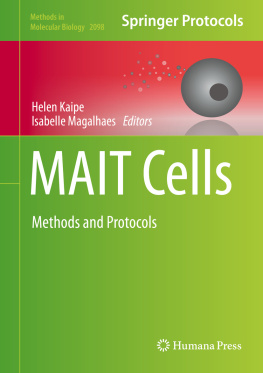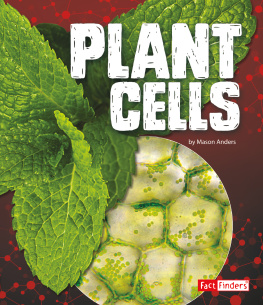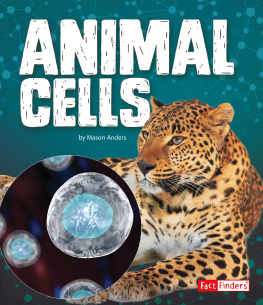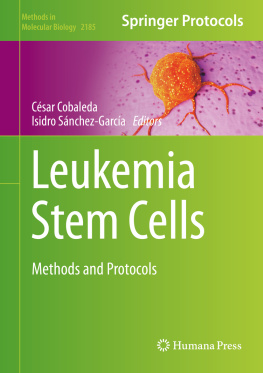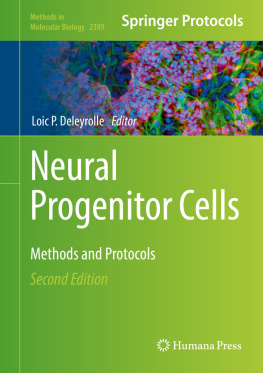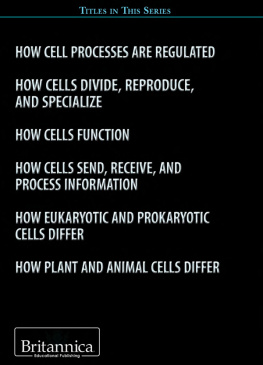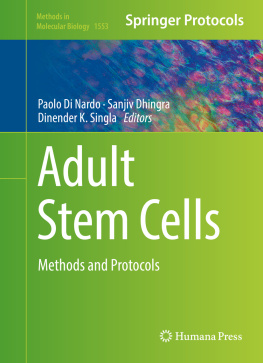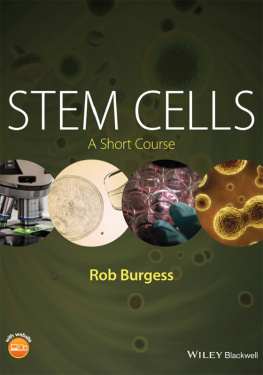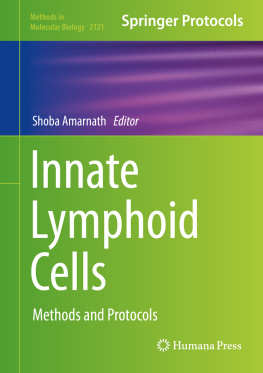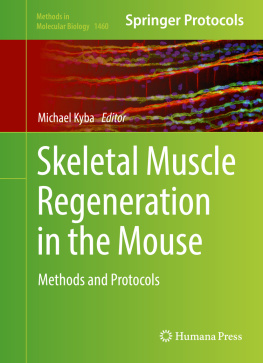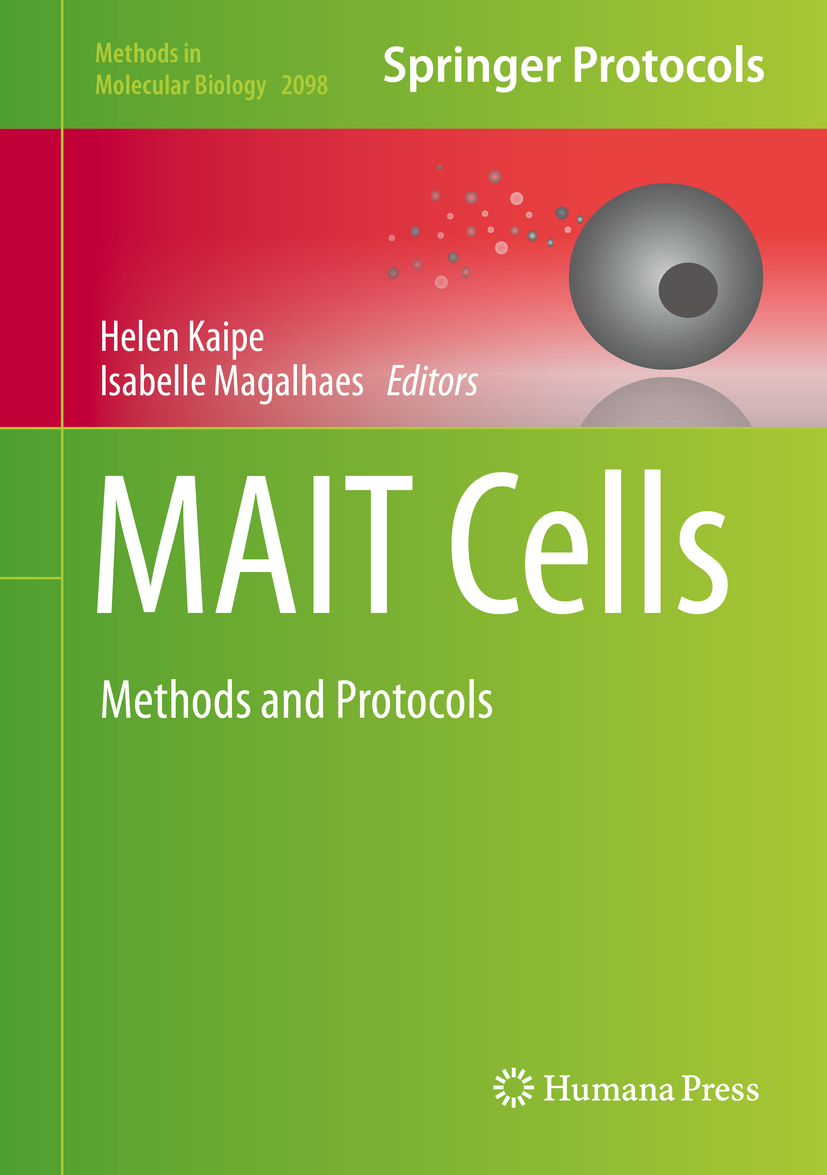Volume 2098
Methods in Molecular Biology
Series Editor
John M. Walker
School of Life and Medical Sciences, University of Hertfordshire, Hatfield, Hertfordshire, UK
For further volumes: http://www.springer.com/series/7651
For over 35 years, biological scientists have come to rely on the research protocols and methodologies in the critically acclaimedMethods in Molecular Biologyseries. The series was the first to introduce the step-by-step protocols approach that has become the standard in all biomedical protocol publishing. Each protocol is provided in readily-reproducible step-by-step fashion, opening with an introductory overview, a list of the materials and reagents needed to complete the experiment, and followed by a detailed procedure that is supported with a helpful notes section offering tips and tricks of the trade as well as troubleshooting advice. These hallmark features were introduced by series editor Dr. John Walker and constitute the key ingredient in each and every volume of theMethods in Molecular Biologyseries. Tested and trusted, comprehensive and reliable, all protocols from the series are indexed in PubMed.
Editors
Helen Kaipe and Isabelle Magalhaes
MAIT Cells
Methods and Protocols
Editors
Helen Kaipe
Department of Laboratory Medicine, Karolinska Institutet, Stockholm, Sweden
Clinical Immunology and Transfusion Medicine, Karolinska University Hospital, Stockholm, Sweden
Isabelle Magalhaes
Department of Oncology-Pathology, Karolinska Institutet, Stockholm, Sweden
ISSN 1064-3745 e-ISSN 1940-6029
Methods in Molecular Biology
ISBN 978-1-0716-0206-5 e-ISBN 978-1-0716-0207-2
https://doi.org/10.1007/978-1-0716-0207-2
The chapters "Influenza A Virus-Infected Lung Epithelial Cell Co-Culture with Human Peripheral Blood Mononuclear Cells" and "Study of MAIT Cell Activation in Viral Infections In Vivo" are Open Access This chapter is licensed under the terms of the Creative Commons Attribution 4.0 International License (http://creativecommons.org/licenses/by/4.0/). For further details see license information in the chapters.
Springer Science+Business Media, LLC, part of Springer Nature 2020
This work is subject to copyright. All rights are reserved by the Publisher, whether the whole or part of the material is concerned, specifically the rights of translation, reprinting, reuse of illustrations, recitation, broadcasting, reproduction on microfilms or in any other physical way, and transmission or information storage and retrieval, electronic adaptation, computer software, or by similar or dissimilar methodology now known or hereafter developed.
The use of general descriptive names, registered names, trademarks, service marks, etc. in this publication does not imply, even in the absence of a specific statement, that such names are exempt from the relevant protective laws and regulations and therefore free for general use.
The publisher, the authors, and the editors are safe to assume that the advice and information in this book are believed to be true and accurate at the date of publication. Neither the publisher nor the authors or the editors give a warranty, express or implied, with respect to the material contained herein or for any errors or omissions that may have been made. The publisher remains neutral with regard to jurisdictional claims in published maps and institutional affiliations.
This Humana imprint is published by the registered company Springer Science+Business Media, LLC, part of Springer Nature.
The registered company address is: 233 Spring Street, New York, NY 10013, U.S.A.
Preface
Mucosal-associated invariant T (MAIT) cells are an invariant type of T cells which recognizes bacterial derived riboflavin metabolites presented on the MHC-class I related (MR1) molecule. MAIT cells are characterized by a rapid innate-like response when activated, by mediating both cytotoxicity and production of inflammatory mediators. In this volume ofMethods in Molecular Biology, we aim to describe methods for studying MAIT cells in several aspects.
The function and importance of MAIT cells in health and disease has only started to be unraveled, and the techniques described in this volume can be used to increase our knowledge in MAIT cell biology. The first part describes methods to isolate and characterize MAIT cells from human tissues, including liver, colon tumors, placenta and decidua, and endometrium. These chapters also contain descriptions of phenotypic and functional analysis by flow cytometry, including stochastic neighbor embedding (SNE) analysis for high-dimensional flow cytometry, as well as immunohistochemistry techniques to detect MAIT cells and MR1-expressing cells in tissues.
MAIT cells can be activated in an MR1-dependent manner by bacterial and fungal species with a functional riboflavin pathway, but they can also be partly activated by MR1-independent stimulation. The second part includes methods for studying activation of MAIT cells by different stimulatory agents. Protocols using anti-CD3 and -CD28 beads, Toll-like receptor agonists, bacterialEscherichia colispecies, riboflavin intermediates, fungalAspergillusandMucoralesspecies, influenza A virus, and inflammatory cytokines for stimulation are presented. Readouts for detection of responses include flow cytometry, ELISA, and cytotoxicity assays. An assay to study migration of MAIT cells in flow chambers is also presented.
MAIT cells are characterized by the expression of the invariant T cell receptor V7.2 and the C-type lectin CD161, but the use of MR1 tetramers has provided an even more reliable tool for the identification of MAIT cells. In the third part of this edition, the production of MR1 tetramers loaded with bacterial antigens that can be used for the detection of MAIT cells is described. A method for studying MAIT cells by quantitative proteomics is presented, which could be used for immune monitoring in different patient groups. This part also contains a protocol for the generation of MR1-restricted T cell clones that can be used for subsequent analysis and a description of reprogramming of MAIT cells to pluripotency and redifferentiation into MAIT cells, a tool that can be used for in vitro expansion of MAIT cells.
MAIT cells are highly conserved in mammalian species and are hence also present in mice. In the last part of this volume, the use of murine models for studying MAIT cells is presented. One chapter describes the use of a mouse model to study MAIT cells in type 1 diabetes, and one presents an in vivo model for studying antiviral responses mediated by MAIT cells. A description of the enrichment of murine MAIT cells for subsequent analysis is also presented.
Finally, we would like to thank all the authors of this book for their great contributions. We think that their efforts will provide great help for other researchers with an interest in MAIT cell biology. We would also like to thank the series editor, Professor John Walker, for giving us the opportunity to edit this volume and for helping us throughout the whole process of completing the book.
Helen Kaipe
Isabelle Magalhaes

